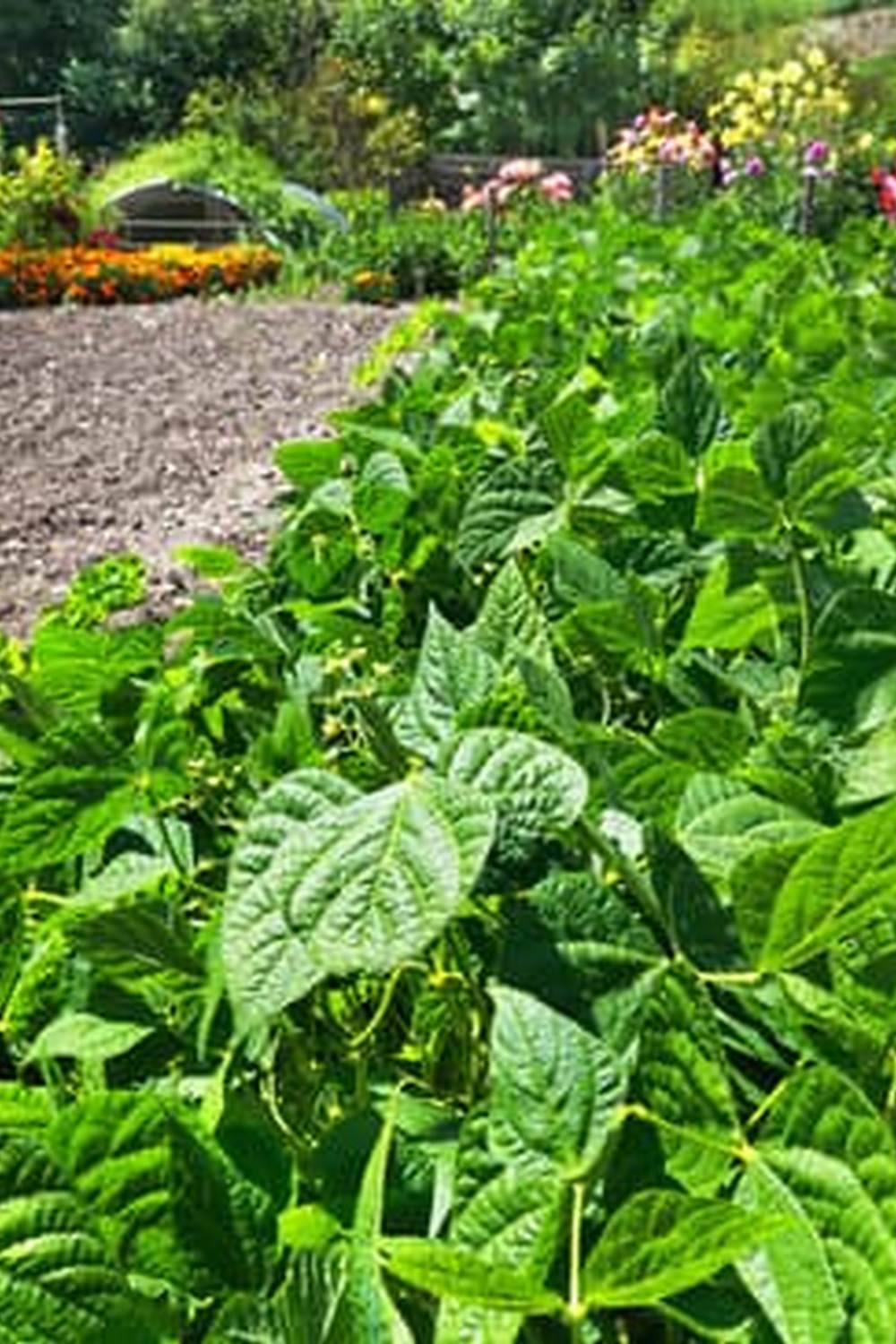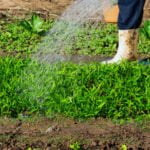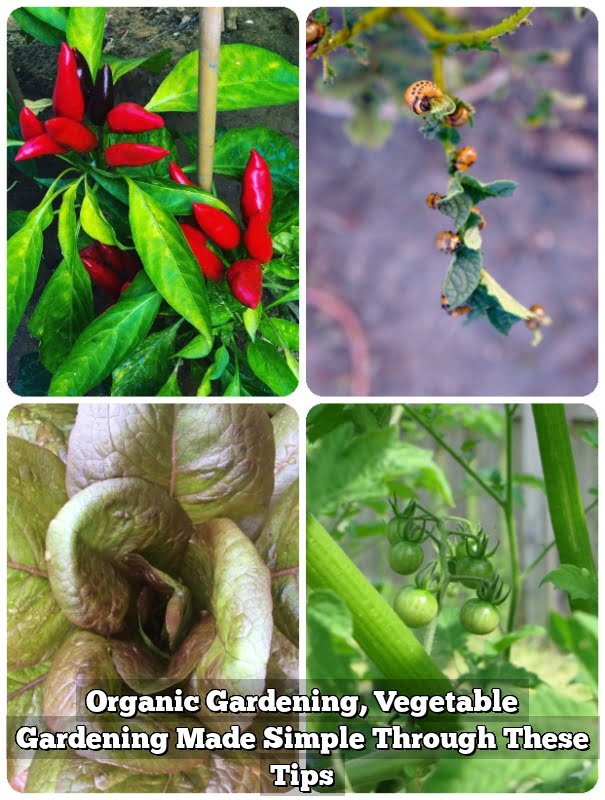Successive vegetable gardening in NC involves the practice of planting crops in a series of successions to maximize yields and extend the harvest season throughout the year. This method is especially beneficial for North Carolina gardeners, considering the state’s diverse climate and growing conditions. By strategically planning and planting different crops at various times, gardeners can enjoy a continuous supply of fresh vegetables.
One of the key benefits of successive vegetable gardening is the ability to make efficient use of space and resources. With proper planning, gardeners can utilize their garden beds or containers effectively by rotating crops and planting new ones as others are harvested. This not only allows for a greater variety of vegetables but also helps maintain soil health by reducing nutrient depletion and pest build-up over time.
In North Carolina, certain vegetables thrive in the state’s unique climate and soil conditions, making them ideal for successive gardening. From leafy greens like lettuce and spinach to summer favorites such as tomatoes and peppers, there are plenty of options to choose from when planning a successive vegetable garden. By selecting the right varieties and following a seasonal planting guide, North Carolina gardeners can enjoy bountiful harvests year-round.
Benefits of Successive Vegetable Gardening
Successive vegetable gardening in North Carolina offers numerous benefits for gardeners looking to maximize their harvests and enjoy a variety of fresh produce throughout the year. One of the primary advantages of this gardening method is the ability to make efficient use of available space by planting crops in succession. This means that as soon as one crop is harvested, another can be planted in its place, ensuring a continuous supply of vegetables.
Another key benefit of successive vegetable gardening is the opportunity to extend the growing season in North Carolina. By carefully planning your plantings and selecting appropriate crops for each season, you can enjoy fresh produce from your garden for a longer period. This method also allows you to take advantage of different weather conditions and optimize growth based on temperature and sunlight requirements.
In addition to maximizing space and extending the growing season, successive vegetable gardening in NC can help improve soil health over time. By regularly planting new crops in different areas of your garden, you can prevent nutrient depletion and reduce the risk of soil-borne diseases. Rotating crops also helps break pest cycles, making it easier to manage common garden pests without relying on chemical pesticides.
| Benefits | Details |
|---|---|
| Efficient use of space | Planting crops successively ensures continuous supply |
| Extended growing season | Allows for fresh produce throughout the year |
| Improved soil health | Prevents nutrient depletion and reduces pest cycles |
Best Vegetables for Successive Gardening in NC
Leafy Greens
Leafy greens are excellent choices for successive vegetable gardening in North Carolina due to their fast-growing nature and ability to tolerate both cool and warm temperatures. Vegetables like lettuce, spinach, kale, and Swiss chard can be planted in early spring and again in late summer for continuous harvest throughout the growing season. By sowing seeds every few weeks, you can ensure a steady supply of fresh greens for your table.
Root Vegetables
Root vegetables such as radishes, carrots, beets, and turnips are well-suited for successive gardening in NC. These crops can be planted early in the spring as soon as the soil is workable and then again in the fall for a late-season harvest. Sow seeds at intervals to ensure a continuous supply of these nutritious veggies throughout the year.
Tomatoes and Peppers
Tomatoes and peppers are some of the most popular vegetables grown by North Carolina gardeners. These warm-season crops can be planted successively starting indoors in early spring and then transplanted outdoors after the last frost date. By staggering your plantings, you can enjoy a prolonged harvest of juicy tomatoes and crisp bell peppers well into the summer months.
By including a variety of leafy greens, root vegetables, tomatoes, and peppers in your successive vegetable garden in NC, you can maximize your yields and enjoy a diverse range of fresh produce throughout the year. Experiment with different varieties to suit your taste preferences and make the most out of your gardening efforts.
Step-by-Step Guide on How to Start a Successive Vegetable Garden in NC
Successive vegetable gardening in NC offers a strategic approach to maximize your garden’s potential and ensure a bountiful harvest throughout the growing season. Whether you are a seasoned gardener or just starting, implementing a successive planting schedule can help you make the most of your space and time. Here is a step-by-step guide on how to start your own successive vegetable garden in North Carolina:
- Assess Your Garden Space: Before diving into planting, take stock of the available space in your garden. Consider factors such as sunlight exposure, soil quality, and drainage to determine the best locations for your crops.
- Choose Your Vegetables Wisely: Selecting the right vegetables for successive gardening is crucial. Opt for quick-growing varieties that can be harvested in a short period to make way for the next crop. Some excellent options include lettuce, radishes, green beans, and zucchini.
- Create a Planting Schedule: Develop a planting schedule based on the frost dates in North Carolina and the maturity dates of your chosen vegetables. This will help you stagger plantings to ensure a continuous harvest throughout the season.
By following these steps, you can establish a successful successive vegetable garden in NC that will provide you with a steady supply of fresh produce from spring until fall. With proper planning and care, you can enjoy an abundance of homegrown vegetables while making the most of your gardening efforts.
Seasonal Planting Guide for Maximum Harvest
Successive vegetable gardening in North Carolina offers gardeners the opportunity to maximize their harvest throughout the year by planting crops in a continuous and strategic manner. By carefully planning out your planting schedule, you can ensure a steady supply of fresh produce from your garden. Here is a seasonal planting guide to help you achieve maximum harvests in NC:
- Spring (March-May): In the spring months, focus on planting cool-season crops such as lettuce, spinach, kale, peas, and radishes. These vegetables thrive in the mild temperatures of spring and can be harvested before the heat of summer sets in.
- Summer (June-August): As the weather warms up, transition to warm-season crops like tomatoes, peppers, cucumbers, squash, and beans. These plants require more sun and heat to thrive, so make sure to provide adequate water and mulch to retain moisture.
- Fall (September-November): Extend your growing season into fall by planting another round of cool-season crops like carrots, beets, broccoli, and cabbage. These vegetables can handle cooler temperatures and will continue to grow even as the weather cools down.
By following this seasonal planting guide for successive vegetable gardening in NC, you can enjoy a bountiful harvest all year round. Remember to rotate your crops each season to prevent soil depletion and minimize pests and diseases. With careful planning and maintenance, your garden will provide you with fresh and delicious produce throughout the changing seasons.
Tips for Maintaining a Successful Successive Vegetable Garden
Regular Watering and Mulching
One of the key factors in maintaining a successful successive vegetable garden in North Carolina is ensuring your plants receive adequate water. Especially during the hot summer months, it’s essential to water your garden regularly to prevent stress on the plants. Consider using a drip irrigation system or soaker hoses to deliver water directly to the root zone. Additionally, mulching around your plants can help retain moisture, suppress weeds, and regulate soil temperature.
Weeding and Crop Rotation
Weeds can quickly take over a garden if left unchecked, competing with your vegetable plants for nutrients and sunlight. Regular weeding is necessary to keep your garden beds clean and ensure your vegetables thrive. Consider using organic mulch or landscape fabric to minimize weed growth. Furthermore, practicing crop rotation can help prevent diseases and improve soil health. Rotate your crops each season to reduce pest infestations and promote healthy plant growth.
Monitoring for Pests and Diseases
Maintaining a vigilant watch for pests and diseases is crucial for the success of your successive vegetable garden in North Carolina. Common pests in the region include aphids, caterpillars, and squash bugs, while diseases like powdery mildew and blossom end rot can affect your plants.
Regularly inspecting your plants for any signs of damage or disease can help you address issues promptly. Consider using organic pest control methods such as handpicking insects or applying neem oil to control infestations while minimizing harm to beneficial insects.
By following these maintenance tips diligently, you can ensure that your successive vegetable gardening in NC remains productive throughout the growing season. Remember that proper care and attention will result in bountiful harvests of fresh, homegrown produce for you and your family to enjoy.
Dealing With Common Pests and Diseases in NC
Dealing with pests and diseases in a successive vegetable garden in North Carolina can be a challenge, but with the right knowledge and proactive measures, you can protect your plants and ensure a bountiful harvest. Some of the common pests that gardeners may encounter include aphids, caterpillars, tomato hornworms, and squash bugs. These pests can quickly damage your crops if left unchecked. It is essential to regularly inspect your plants for any signs of infestation and take action immediately.
One effective method to control pests in your successive vegetable garden is by practicing crop rotation. Rotating your crops each season can help disrupt the life cycle of pests and reduce the likelihood of infestations. Additionally, you can also introduce beneficial insects such as ladybugs or lacewings to prey on harmful pests naturally. Using floating row covers or installing physical barriers like fencing can also protect your plants from invading pests.
In terms of diseases, common issues that gardeners in North Carolina may face include powdery mildew, blossom end rot, and blight. To prevent the spread of disease in your garden, it is crucial to practice good sanitation habits such as cleaning tools regularly and removing any infected plant debris immediately.
Proper spacing between plants is also essential for good air circulation, which can help prevent the development of fungal diseases. If necessary, consider using organic fungicides as a last resort to treat fungal infections while minimizing harm to beneficial insects and other wildlife in your garden.
| Pests | Control Methods |
|---|---|
| Aphids | Introduce beneficial insects |
| Caterpillars | Handpick larvae off plants |
| Blight | Practice good sanitation habits |
Success Stories From North Carolina Gardeners
Successive vegetable gardening in North Carolina has become increasingly popular among gardeners looking to maximize their harvests throughout the growing season. Many gardeners in NC have shared their success stories, showcasing the benefits of this method and inspiring others to give it a try. By planting and harvesting crops in overlapping or successive periods, gardeners can enjoy a continuous supply of fresh produce from their gardens.
One success story comes from Sarah, a gardener in Raleigh, NC, who started successive vegetable gardening three years ago. She shares that by carefully planning her plantings and choosing the right vegetables for each season, she has been able to enjoy a bountiful harvest year-round. Sarah emphasizes the importance of crop rotation and succession planting in maintaining soil health and preventing pest infestations.
Another inspiring story comes from James, a gardener in Charlotte, NC, who transformed his backyard into a flourishing vegetable garden using the successive gardening method. James highlights how this approach has not only provided him with an abundance of fresh vegetables but has also connected him with his community through sharing surplus produce with neighbors and local food banks. Through his experience, James encourages fellow North Carolinians to embrace successive vegetable gardening for its sustainability and rewarding results.
These success stories serve as testaments to the effectiveness of successive vegetable gardening in North Carolina. By following best practices, choosing the right vegetables for each season, and staying consistent with maintenance routines, gardeners can achieve thriving gardens that yield an array of delicious produce throughout the year. The key is to start small, learn from each growing season’s experiences, and adapt your methods accordingly to create a sustainable and productive garden space.
Conclusion
Successive vegetable gardening in North Carolina offers a sustainable and efficient way to maximize your garden’s productivity throughout the growing season. By planting crops in succession, you can ensure a continuous harvest of fresh produce, providing you with a steady supply of nutritious vegetables for your family. This method not only helps you make the most of your garden space but also allows you to enjoy a variety of homegrown veggies from early spring to late fall.
One of the key benefits of successive vegetable gardening is the ability to extend your harvest and diversify the types of crops you can grow in North Carolina’s varying climate. By carefully planning your plantings and selecting appropriate vegetables for each season, you can enjoy a bountiful harvest year-round. Additionally, this method can help reduce waste by avoiding large surpluses during peak harvest times and promoting a more balanced distribution of produce throughout the year.
As you embark on your own successive vegetable gardening journey in North Carolina, remember to stay organized and follow a seasonal planting guide to ensure optimal growth and yield. Keep track of planting dates, crop rotations, and pest management strategies to maintain a healthy garden ecosystem.
With dedication and proper care, you too can experience the joy of growing your own food sustainably while contributing to a greener environment in NC. So roll up your sleeves, dig into the soil, and start sowing seeds for a fruitful future.
Frequently Asked Questions
What Vegetables Can You Plant Twice a Year?
Some vegetables that can be planted twice a year include radishes, carrots, lettuce, spinach, and peas. These cool-season crops can be planted in the spring and again in late summer for a fall harvest.
What Vegetables Can You Harvest More Than Once?
Vegetables that can be harvested more than once include tomatoes, peppers, beans, cucumbers, and zucchini. As long as they are properly cared for and continue to produce new growth, you can harvest multiple times throughout the growing season.
Which Vegetables Should Be Succession Planted?
Vegetables that should be succession planted include radishes, leafy greens like lettuce and spinach, carrots, and bush beans. By planting these crops every few weeks, you can ensure a continuous harvest throughout the growing season without overwhelming yourself with a single large harvest at once.

If you’re looking to get into vegetable gardening, or are just looking for some tips on how to make your current garden better, then you’ve come to the right place! My name is Ethel and I have been gardening for years. In this blog, I’m going to share with you some of my best tips on how to create a successful vegetable garden.





